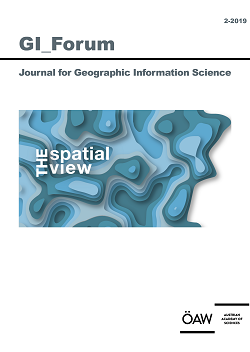Adrijana Car – Thomas Jekel – Josef Strobl – Gerald Griesebner (Eds.)
GI_Forum 2019, Volume 7, Issue 2
Journal for Geographic Information Science
Marcel Vorage
S. 163 - 179
doi:
10.1553/giscience2019_02_s163
Verlag der Österreichischen Akademie der Wissenschaften
doi:
10.1553/giscience2019_02_s163
Abstract:
Chronic exposure to loud noise has detrimental effects on health, subjective wellbeing and concentration levels of both adults and children. Over two million people in Austria reside in areas where traffic noise surpasses the legal threshold for action. Hundreds of schools are also affected. A similar situation is present throughout large parts of the European Union. Because traffic noise can be heard and measured relatively easily, awareness among the general population is high. Publicly funded data collection has taken place based on EU regulations, and reliable noise maps are available online. This paper aims to provide teachers with multidisciplinary tools to improve their students’ understanding of noise. It suggests project ideas for students to choose depending on their strengths and affinities. The ultimate goal is to enable and motivate students to engage in informed spatial citizenship, notably in taking action to help keep exposure to traffic noise at acceptable levels.
traffic noise, education, secondary school, spatial citizenship
Published Online:
2019/12/11 14:41:28
Object Identifier:
0xc1aa5576 0x003b17a9
Rights:https://creativecommons.org/licenses/by-nd/4.0/
GI_Forum publishes high quality original research across the transdisciplinary field of Geographic Information Science (GIScience). The journal provides a platform for dialogue among GI-Scientists and educators, technologists and critical thinkers in an ongoing effort to advance the field and ultimately contribute to the creation of an informed GISociety. Submissions concentrate on innovation in education, science, methodology and technologies in the spatial domain and their role towards a more just, ethical and sustainable science and society. GI_Forum implements the policy of open access publication after a double-blind peer review process through a highly international team of seasoned scientists for quality assurance. Special emphasis is put on actively supporting young scientists through formative reviews of their submissions. Only English language contributions are published.
Starting 2016, GI_Forum publishes two issues a Year.
Joumal Information is available at: GI-Forum
GI_Forum is listed on the Directory of Open Access Journals (DOAJ)




 Home
Home Print
Print
 References
References
 Share
Share
